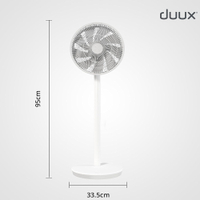How to cool down a room without AC: 17 fast and effective tricks to try
These quick and easy hacks can help to cool down a room without AC, even if you are in a space without windows or don't have a fan
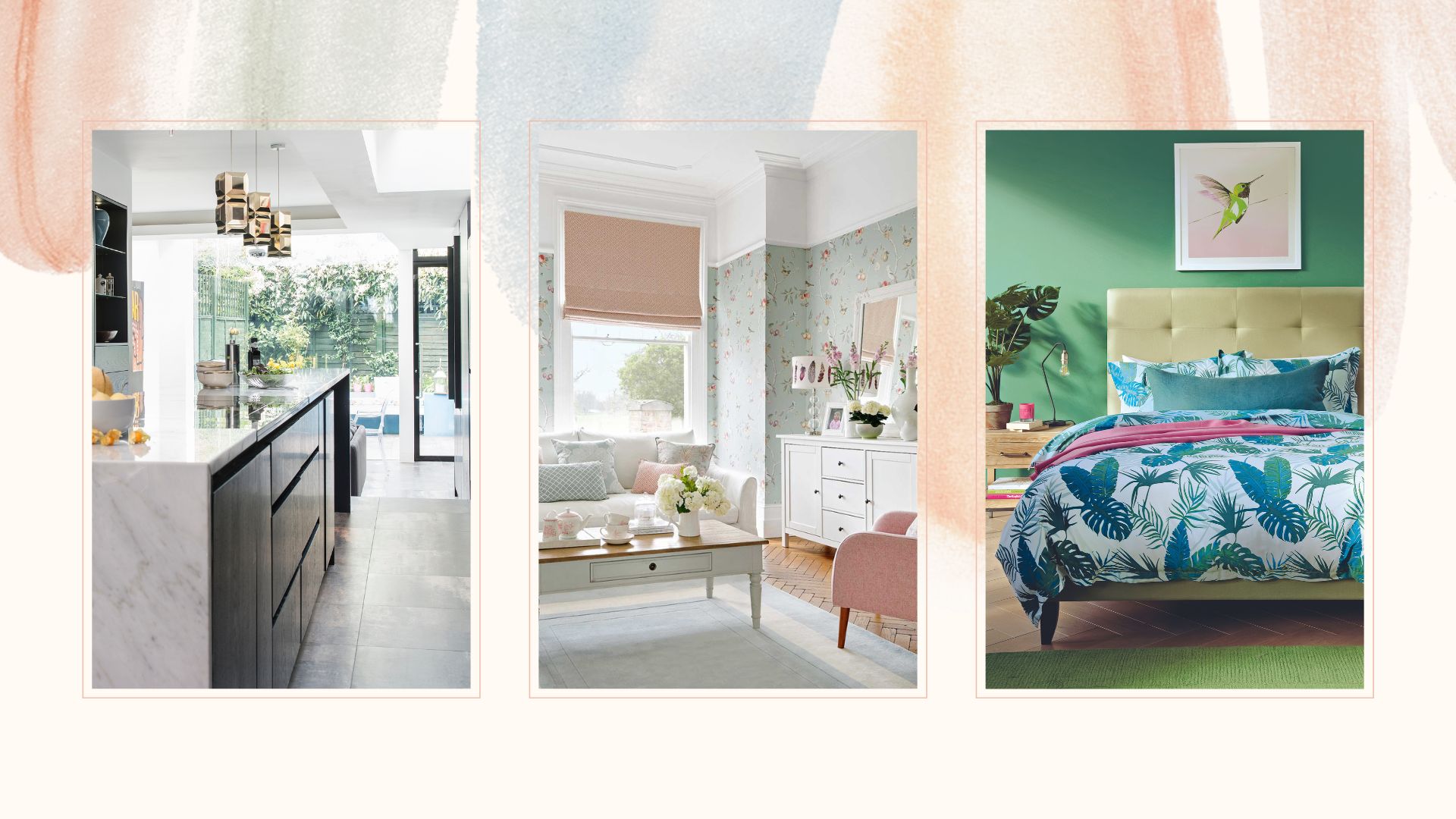

Tamara Kelly
Discover how to cool down a room without AC quickly and efficiently with these simple hacks recommended by experts.
We've pulled together the best, tried and tested, methods to cool down a room without AC.
By exploring all the options we've ensured there's a solution for every space; so whether you're in a room without windows, or don't have a fan to hand, there will be an effective method you can try to bring down the temperature of the room you're in as quickly as possible.
If you're particularly worried about keeping a bedroom cool without AC in the evening, you can also follow our guide on how to sleep in the heat for expert-led solutions for slumber during the summer months.
How to cool down a room without AC: 17 expert tips
There are plenty of simple yet smart ways to cool down a room, even without the aid of air conditioning.
From hanging damp sheets at windows to using one of the best dehumidifiers, these are the best expert-approved ways to help keep cool indoors during the current heatwave.
1. Keep curtains and blinds drawn
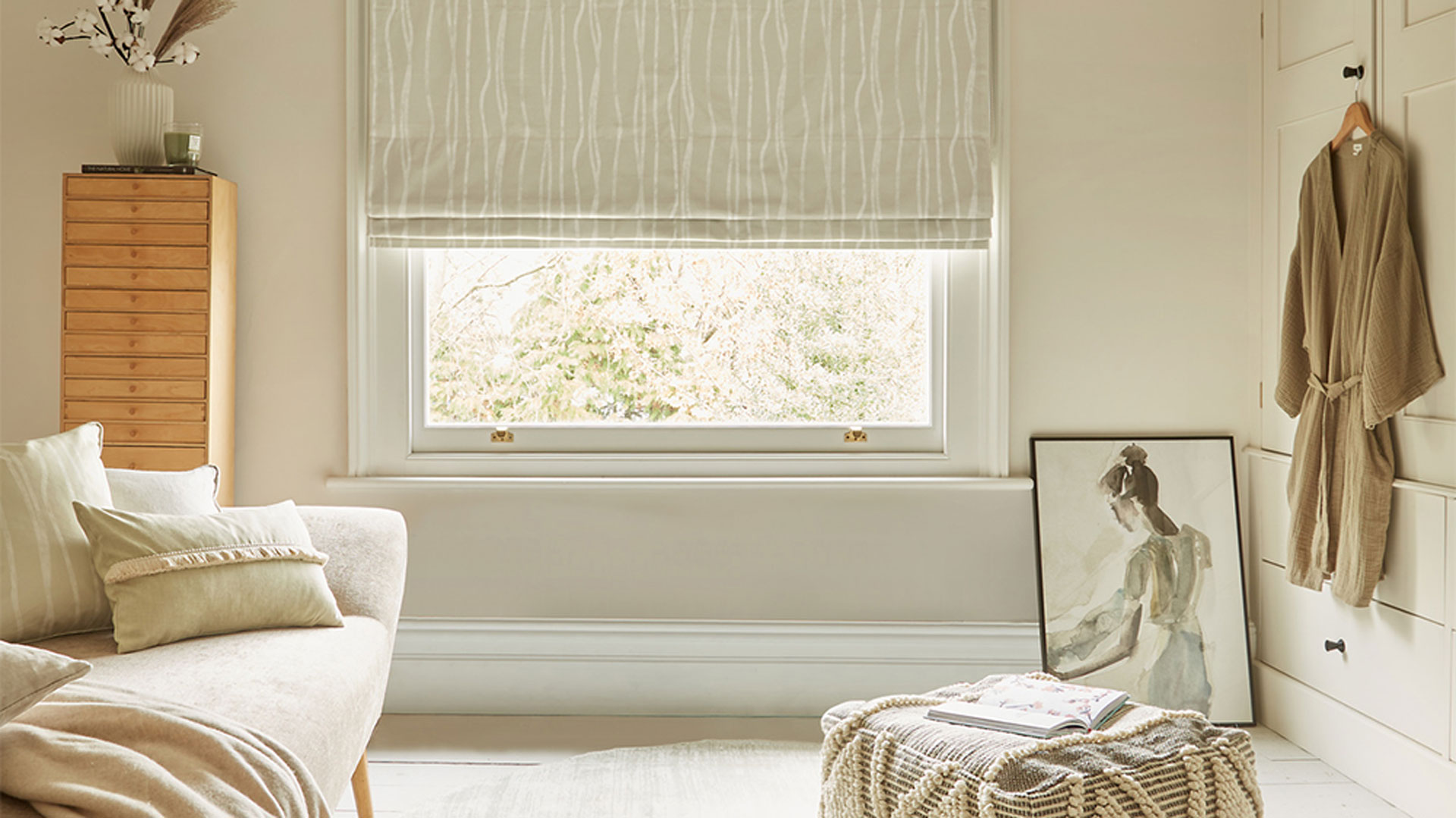
During the summer months, it’s a good idea to keep your curtains or blinds closed during the day to block out sunlight, which can increase the room’s temperature.
Sign up for the woman&home newsletter
Sign up to our free daily email for the latest royal and entertainment news, interesting opinion, expert advice on styling and beauty trends, and no-nonsense guides to the health and wellness questions you want answered.
As simple as this one may sound, keeping your blinds closed throughout the day deflects the sun’s powerful rays from heating your house and is therefore a great way to keep the room cool without AC.
“To block out direct sunlight and heat, make sure your blinds and curtains are closed during the day - it’s much easier to prevent a room from getting too hot before it’s too late by keeping them cool throughout the day," explains Andy Kerr, founder of heating and cooling specialist BOXT.
This simple hack will help cool down a room without AC, especially if you do as Ben suggests and open windows in the evening once the sun has set and the heat of the day has worn off, allowing cool air to circulate around the room.
Blackout blinds, curtains, or solid shutters are another longer-term option to think about, as these are designed to block outside light completely and keep bedrooms dark and cool in the summer while insulating against the cold when temperatures drop over the winter months too.
2. Use fans more effectively
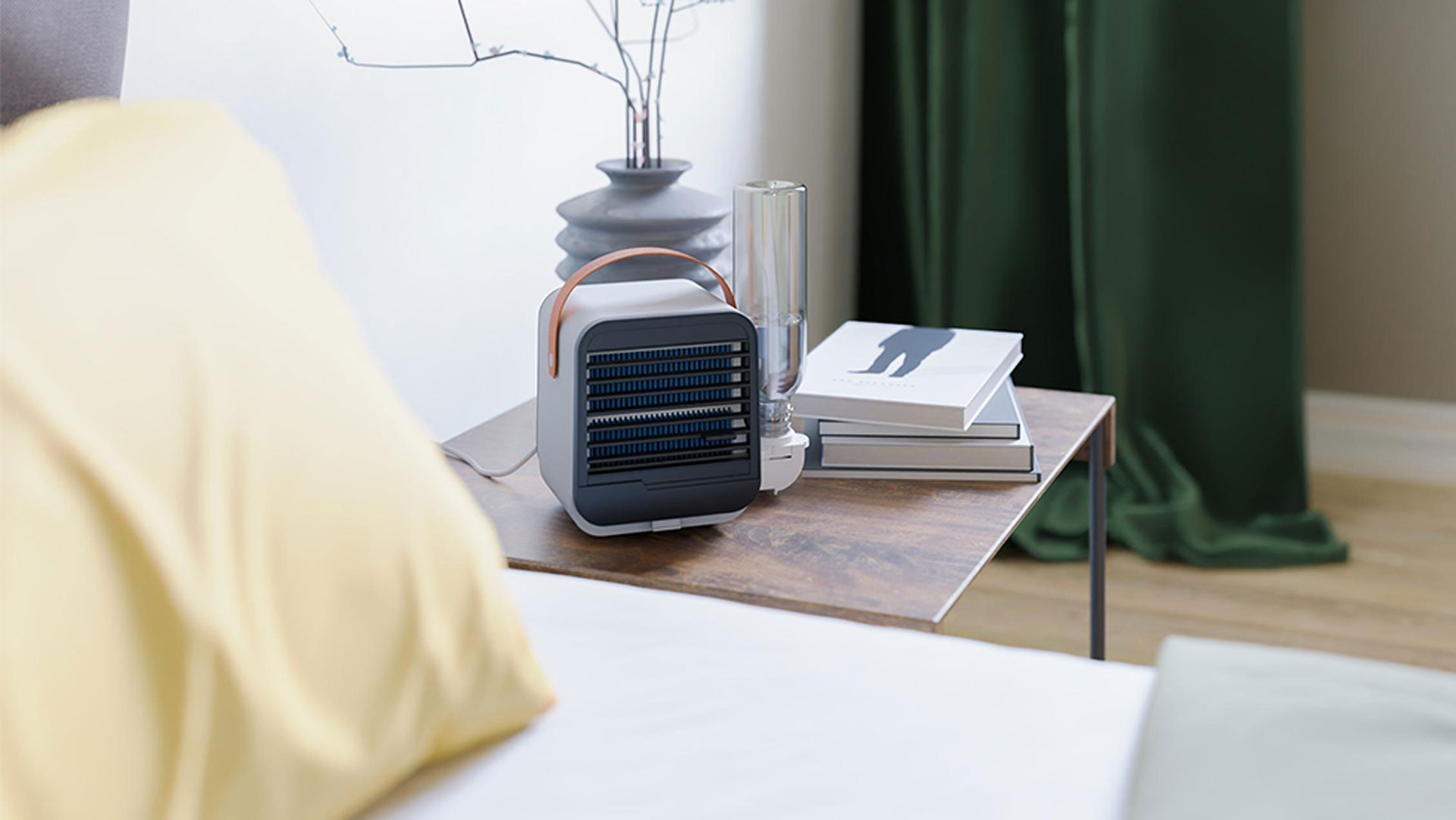
While any type of electric fan can be a great relief when it’s excessively hot, using them strategically using a few handy fan hacks can increase their benefits no end. If you have a ceiling fan, make sure that it is set to rotate counter-clockwise, this ensures that the blades push air down and create a cool breeze. And turn it off when you leave the room because ceiling fans cool people, not rooms.
When it comes to table or floor-standing fans, make sure yours is pointed in the right direction to get maximum airflow. The corner of a room is a good position so that more of the room can be covered evenly.
Choose a spot where there are no large items of furniture to block the flow of air. Tower fans are a good option as they cover a larger area than rotary fans and create a sheet of air rather than a tunnel effect.
"When selecting a model, air circulation is key, so consider a fan that oscillates both horizontally and vertically," advises Dennis Wessels, from air treatment experts Duux. "Opting for an adaptable, portable fan, that can be effortlessly changed from full to table height, allows for greater flexibility between rooms and positions."
Duux Whisper Essence Standing Fan: £99 at Amazon
With 7 cooling speeds, oscillating movement, adjustable tilt, night mode and timer this Duux model is a fine example of a flexible fan. The 'Whisper' element means it's designed to be ultra-quiet, making it ideal for bedrooms.
3. Use a dehumidifier
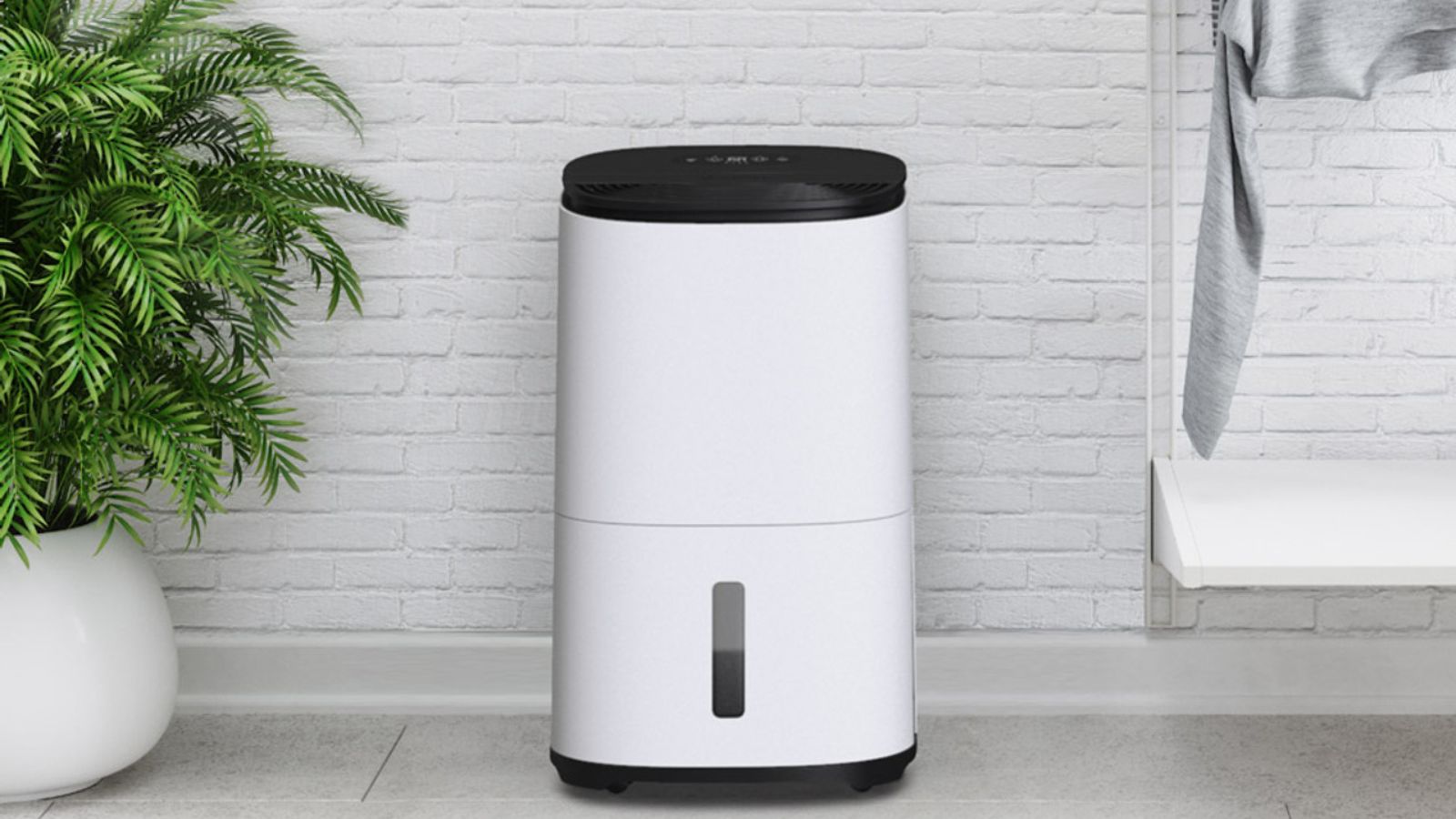
While you can't really compare the merits of air conditioners vs dehumidifiers, the latter does come in handy when it comes to making you feel more comfortable in a hot room – a valid reason to buy a dehumidifier in summer.
While a dehumidifier doesn't technically lower the temperature it reduces the levels of humidity which can make the atmosphere feel close and uncomfortable.
By reducing the moisture content in the air it allows it to flow quicker, and the faster it moves the cooler it feels – that's how fans work.
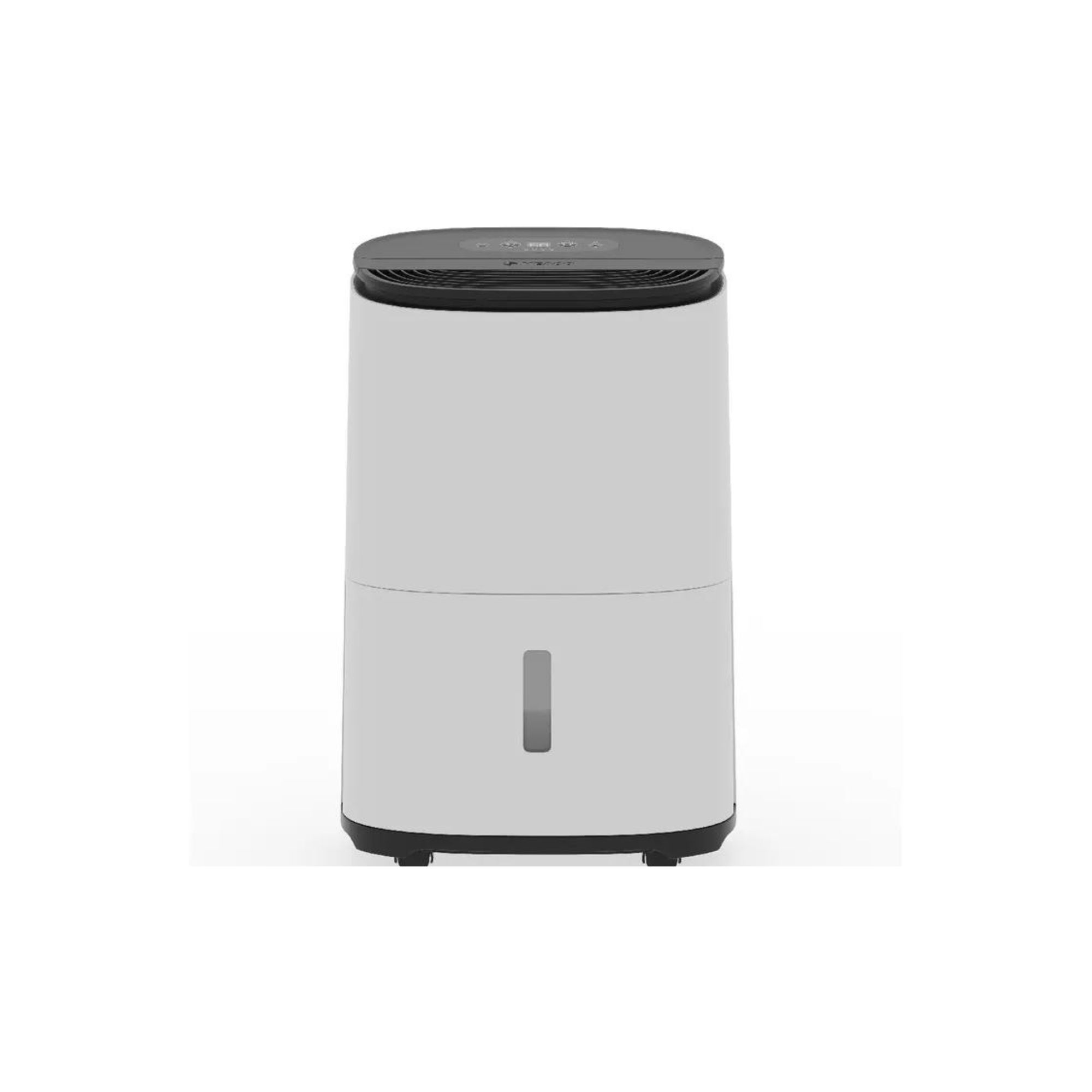
The MeacoDry Arete One is a brilliant all-rounder. It's simple to use, great for large spaces and quiet - what more could you want? It even has a laundry mode, handling your home's moisture and wet clothes on days when you can't hand the washing on the line.
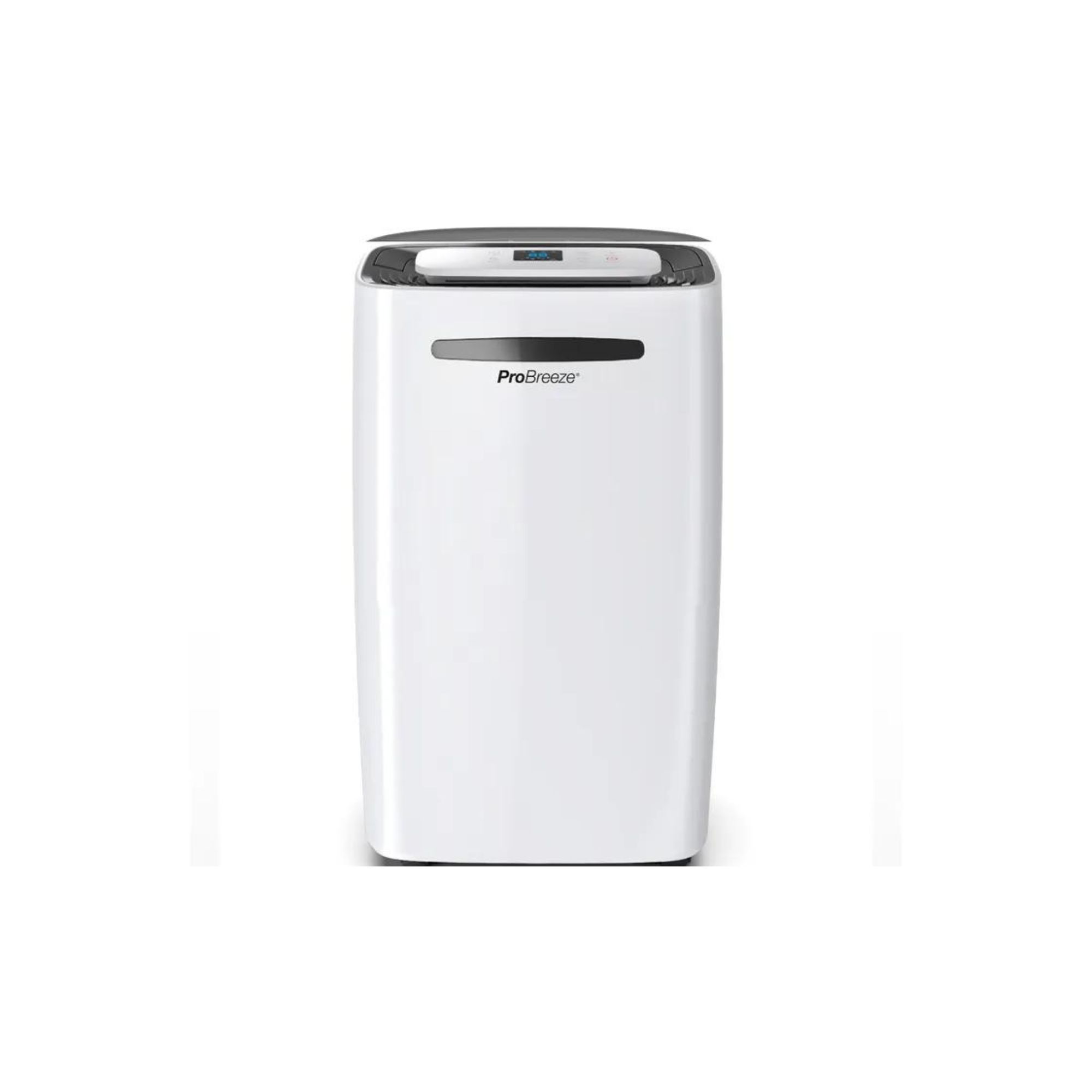
Our Pro Breeze dehumidifier review revealed that this model has enough capacity of 5.5L of water, plenty to keep a large room feeling cooler.
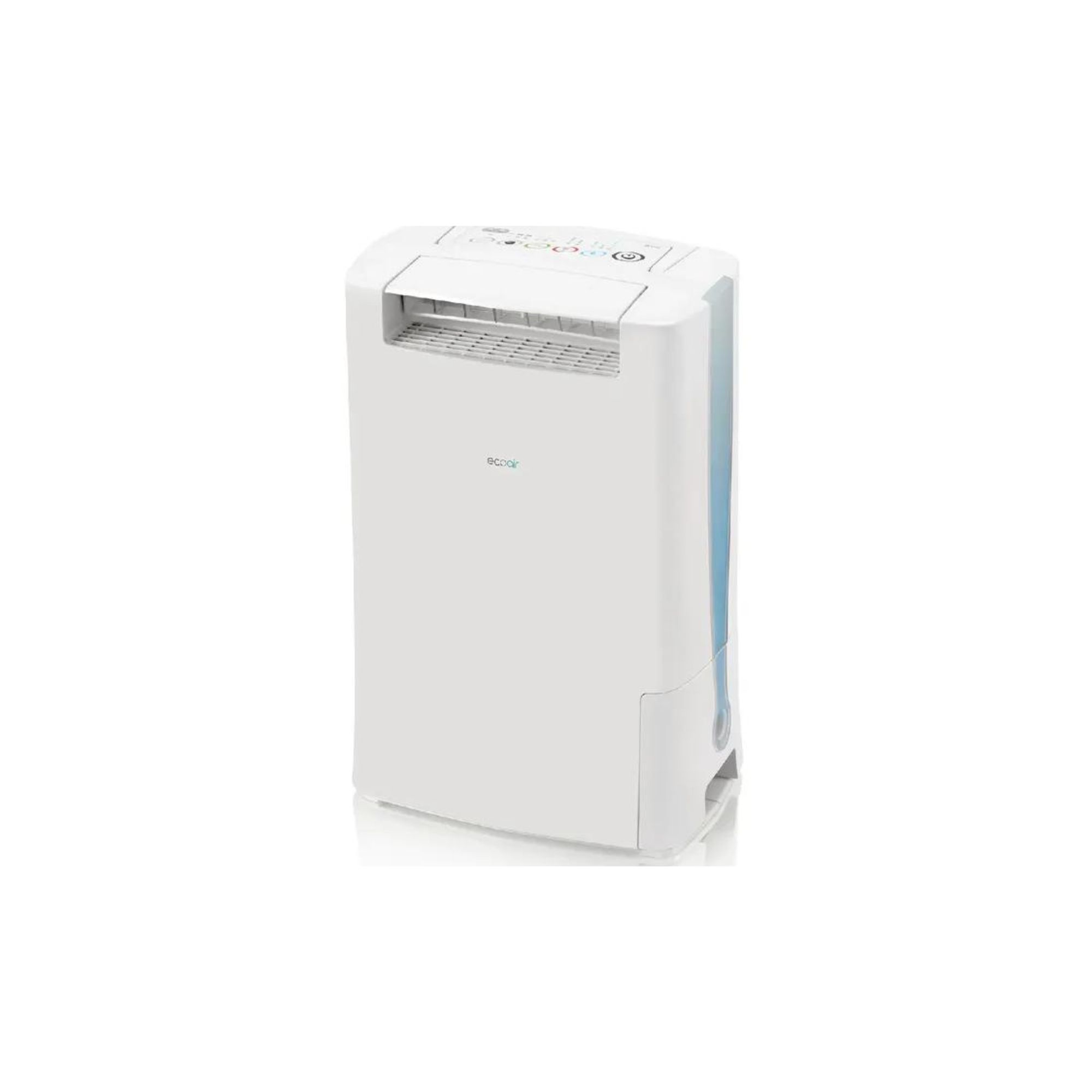
In addition to aiding your cooling journey this EcoAir dehumidifier is incredible at drying clothes. The Desiccant 8L features three drying modes and two laundry.
4. Improve the air flow by opening windows
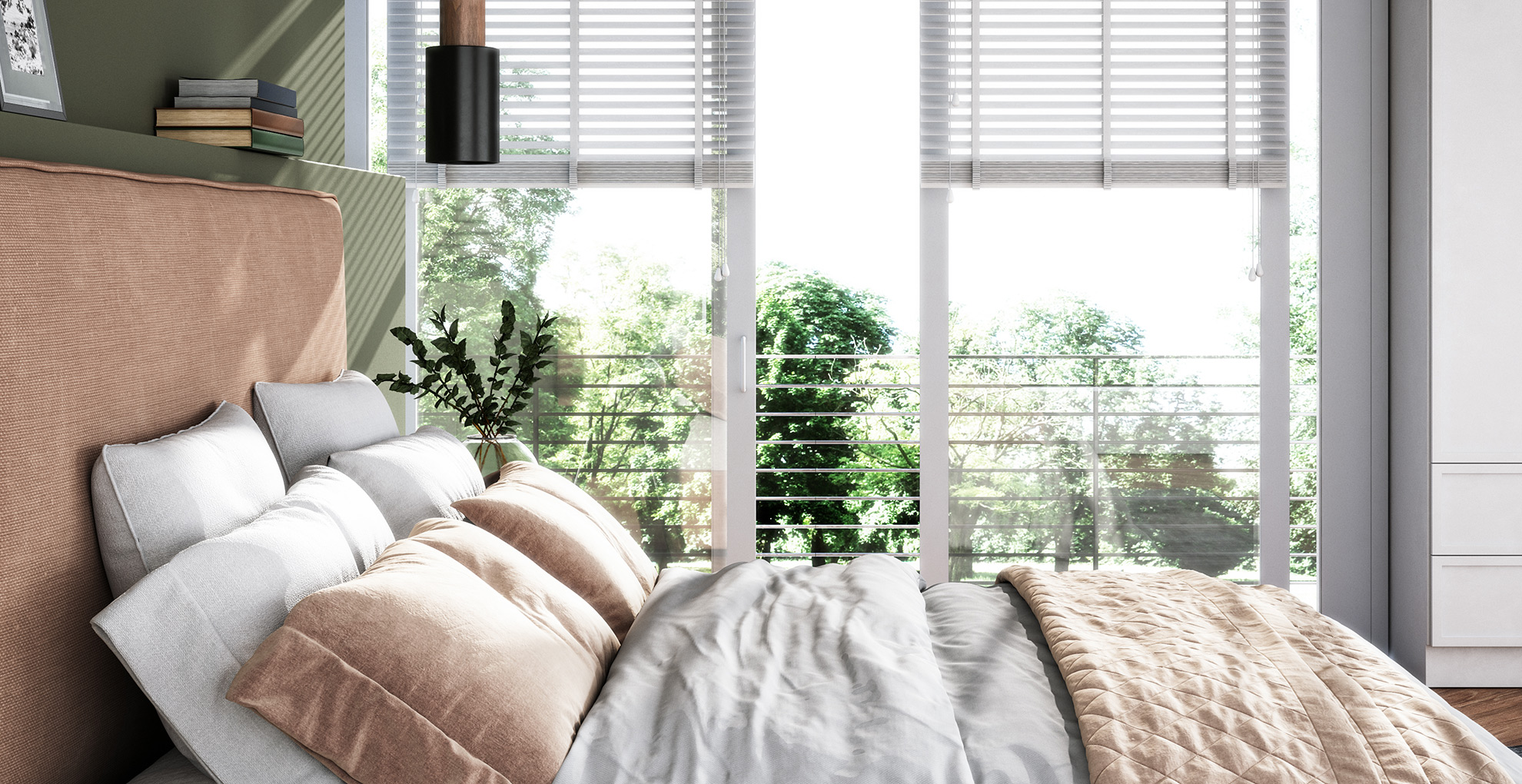
One of the best ways to cool down a room without AC is by creating a continuous stream of airflow by opening two windows on opposite sides of a room. Or alternatively, opening windows in adjacent rooms and keeping the doors open to allow air to flow through your home.
"Maintaining airflow is important to displace warm air, so when the outdoor air is cooler than indoors, opening multiple windows will help create a breeze through the home," says Stephen Beresford, from window experts REHAU.
Heat rises, so if you have a loft or an attic, opening windows or hatches will allow rising heat to escape and it's also a good idea to prioritize opening windows upstairs for this same reason. Not only will it give hot air in the house somewhere to escape to, but it will also bring down the room temperature in the bedrooms before you need to try and sleep.
"Ensure the air from your lower level is spreading upwards," adds Andy. "To do this, ensure your windows are open downstairs before opening them all upstairs. This will create a vacuum and encourage the rising hot air to flow out upstairs."
5. Choose a portable unit
While this method does involve AC, it's not in the truest sense because portable air conditioners are much more affordable and accessible. There's no need for installation and you can move the appliance from room to room.
"The best advice on buying a portable air conditioner is to ignore gimmicks and go for a larger capacity," says Chris Michael, MD of air treatment specialist Meaco. "Many people underestimate the cooling size and can be disappointed when they find that their portable air conditioner does not offer enough cooling on the hottest evenings."
"To get a good night’s sleep, turn the air conditioner on a few hours before you go to bed. Keep the bedroom door closed and the blinds and curtains closed. The hose from the air conditioner needs to go out of the window but use the window blocker to seal off the rest of the window to make the air conditioner as efficient as possible."
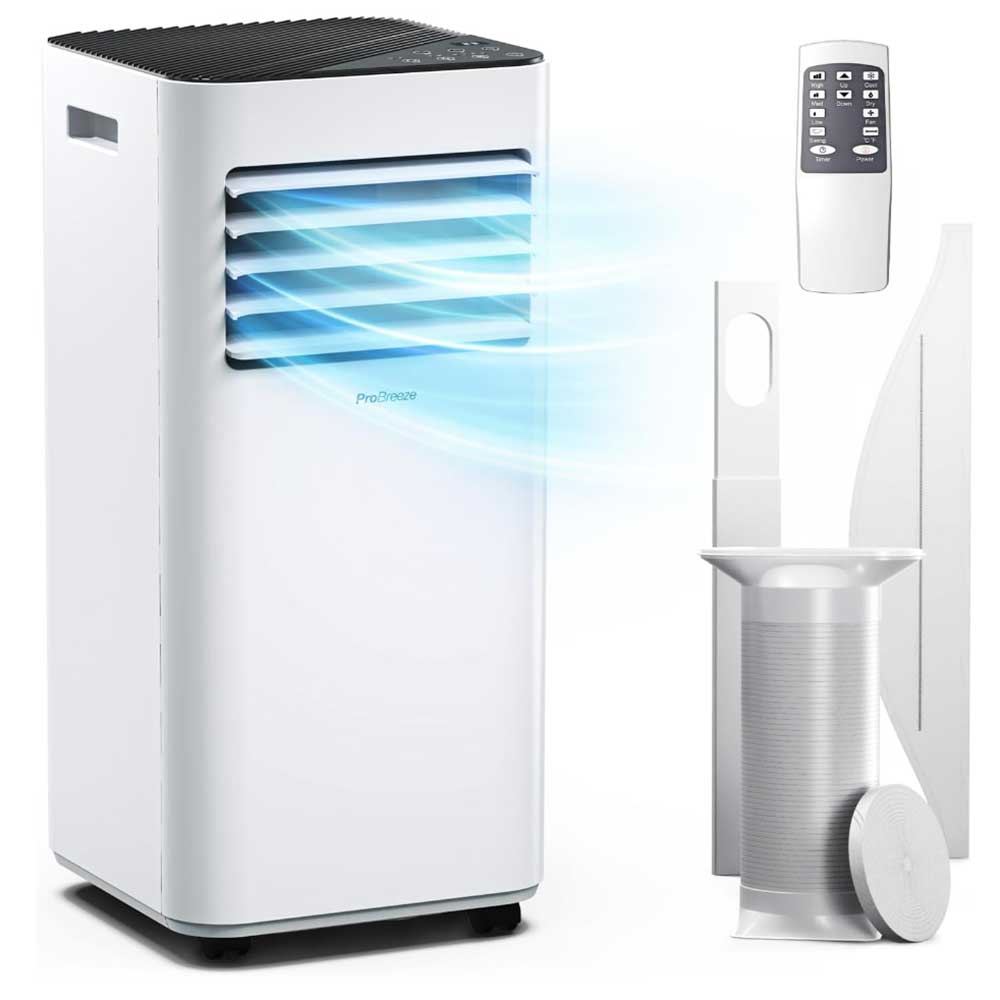
RRP: £289 | This Pro Breeze portable air conditioner is a top-rated Amazon choice with pleasing reviews (4.1 out of 5 overall) for ease of use and cooling performance. With its 50-litre sealed water tank, this portable unit is equipped with a high-performance motor that operates various multi-purpose modes including auto, air cooling, dehumidifying, fan-only and energy-saving sleep modes.
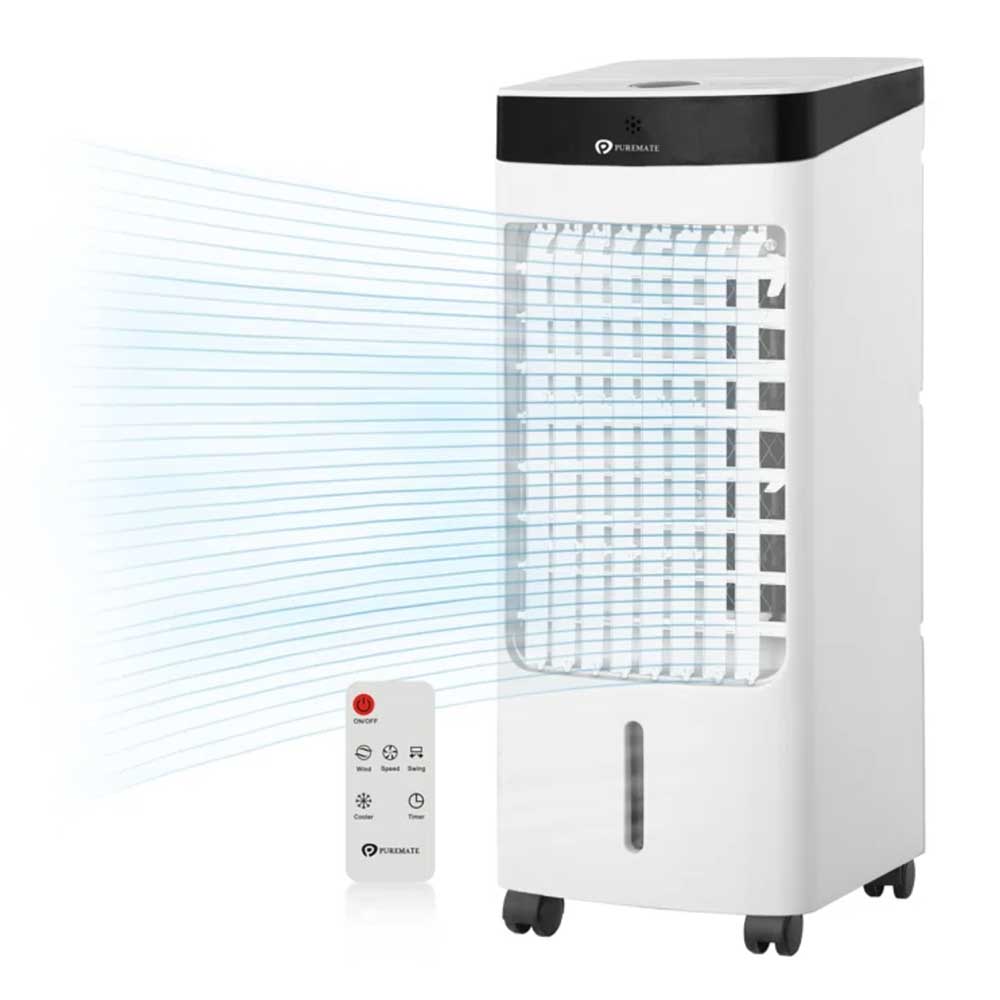
RRP: £94 | This versatile PureMate portable air conditioner unit features a 4-litre water tank with cold water and cooling packs which allow the unit to automatically cool and humidify the air to both combat dry heat and low humidity. It offers three speed settings, which are High, Medium and Low, and three wind modes, which are Normal, Natural and Sleep - all controlled by a built-in timer.
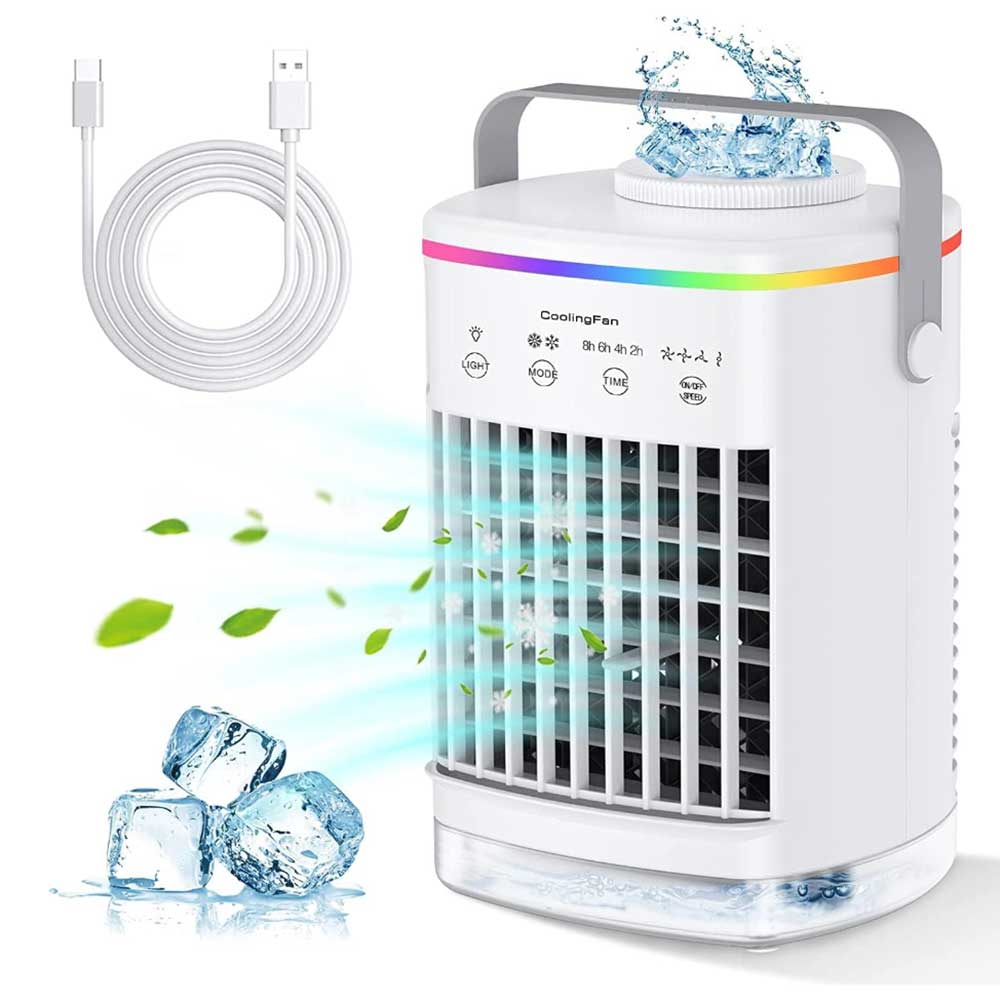
RRP: £25 |This is Amazon's choice for portable air conditioners, with an impressive 4.5-star rating. With a 700ml sealed water tank, the air conditioner unit can work continuously for 6-8 hours. The small but mighty device offers 3 modes (Natural Wind/Low Cool Mist/High Cool Mist) and 4 wind speeds (Low/Natural/Mid/High) to ensure suitable cooling at all times.
6. Create exterior shade at windows
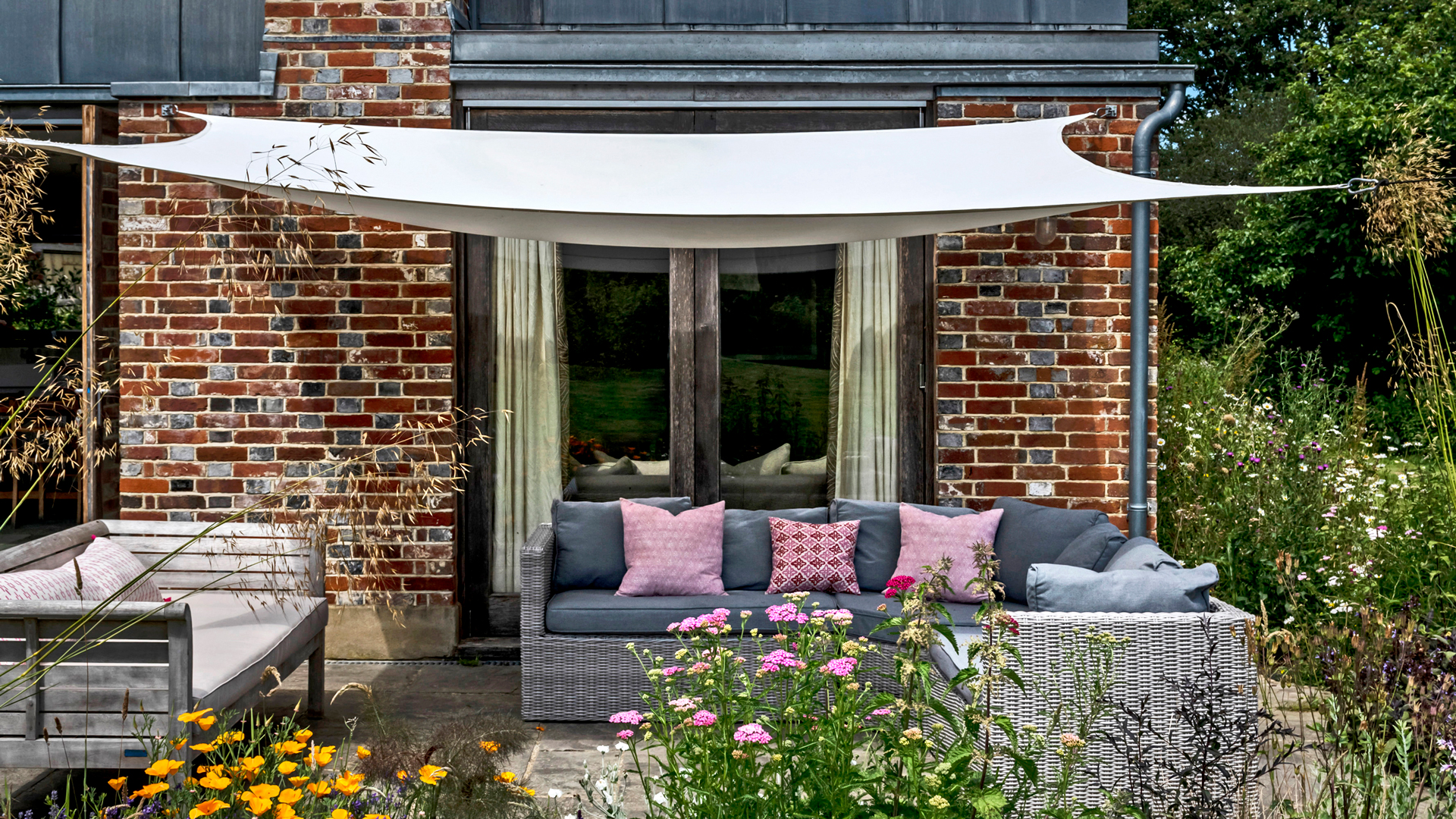
Another effective tactic that will keep downstairs rooms cool is to create shade outside the windows, especially in rooms where you are likely to relax during the hottest parts of the day.
Consider moving the garden parasol or gazebo to a position directly outside the windows to shelter rooms from the sun bearing down on them, causing rooms to feel hot and humid.
Of course, window treatments such as curtains and blinds do the job indoors, but it's more effective when you reduce the sun exposure further by blocking the direct sun from the outside, too. Covering the windows is also an easy way to block your neighbour's view, should you wish to walk around with fewer layers on to beat the heat.
7. Hang damp sheets in front of the windows
An instant cooling home hack when it's really hot outside is to hang damp sheets from the curtain poles in front of any open window, especially at night. The moisture from the sheets will help to cool any incoming breeze from outside. The hot air provides a great solution for drying laundry indoors.
Using the same principle you could alternatively try spraying curtains with a mist of cold water, and keep the water in a bottle in the fridge so it's refreshingly cold.
You can also utilize doorways in the same way, provided there's a flow of air passing through. "Hanging a dampened sheet over the doorway can create a natural air conditioner," explains James De Meo, HVAC engineer, and master plumber at This Fixed House. "As air flows through the sheet, it will cool down due to the evaporation of the water."
8. Close doors to keep out the heat
This simple tip quite literally shuts the heat out and traps the coolness in. If you're using cooler rooms during the hottest points of the day, a benefit of any north-facing rooms, it's the idea to shut doors to stop hot air generating from other rooms.
Closing doors in rooms that you’re not using can help trap cooler air in the rooms that you’re in. If you don’t shut off certain areas of your house, it allows the cool air to dissipate and every room will end up at a similar temperature. And if that temperature is hot, your room will not stay cool for long.
And if you have doors with gaps, especially those that lead outside, putting towels at the doors will help to keep the cool air in, acting as a simple and inexpensive form of insulation.
9. Switch off electrical devices
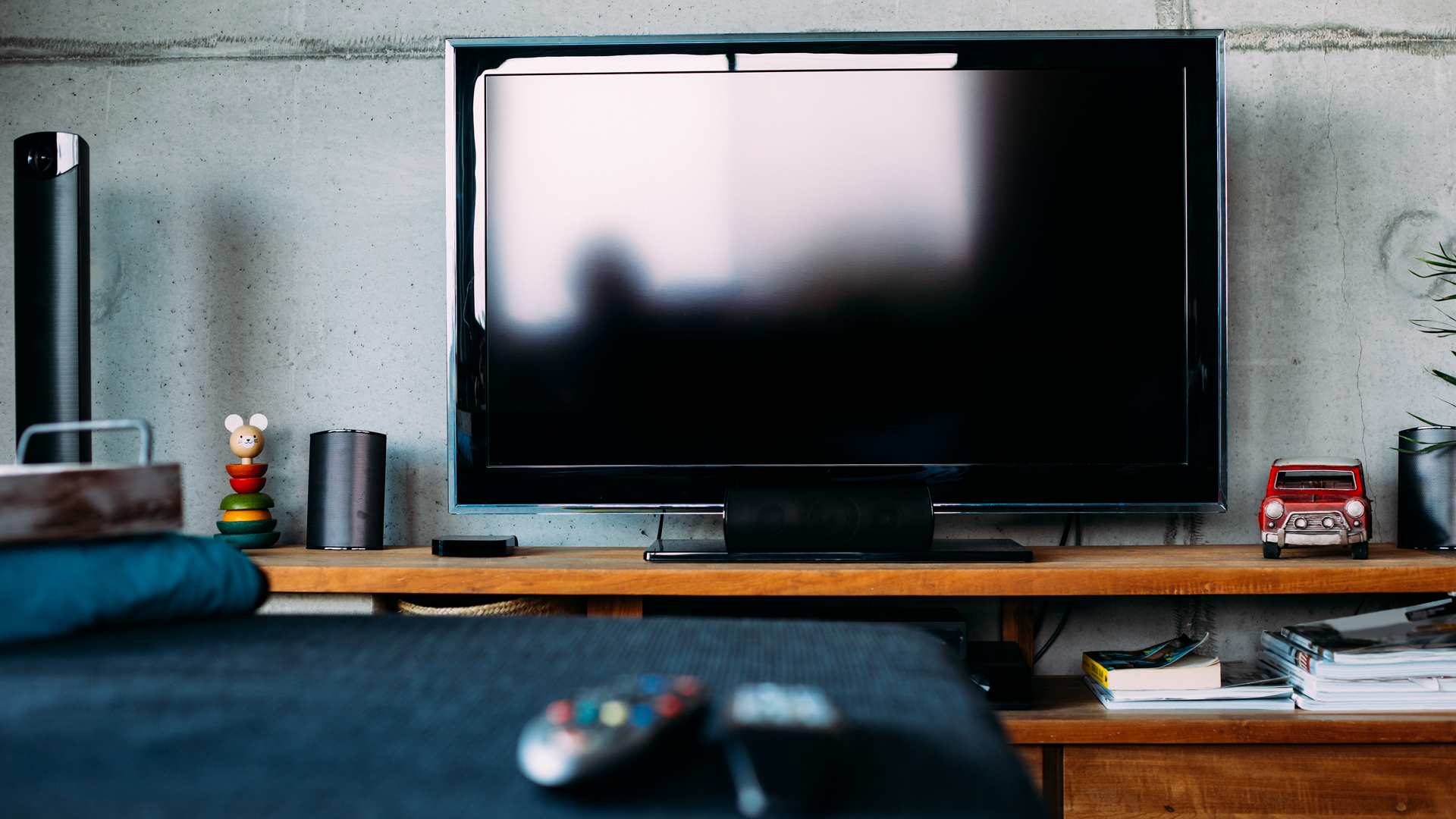
Aside from obvious appliances like ovens, any electrical devices, such as laptops, TVs, and lamps, give off heat and contribute to the overall temperature of a room. So if you don't have AC, switching devices off when you're not using them is a great way of reducing unnecessary extra heat fast and effectively.
"It’s counter-intuitive to use appliances that generate heat in a room that you’re trying to cool," says Andy. "So bear this in mind before deciding to use ovens, hair dryers, etc."
You should also avoid having these electrical items too close to you. For example, don't sit in bed with a laptop on your lap as this will raise your body temperature and make the room feel warmer.
Also, turn off all the plug sockets you can to help keep things cool because electrical sockets kick out a surprising amount of heat. Being conscious and turning off power sources can also save some energy at the same time.
10. Bring in plants and greenery
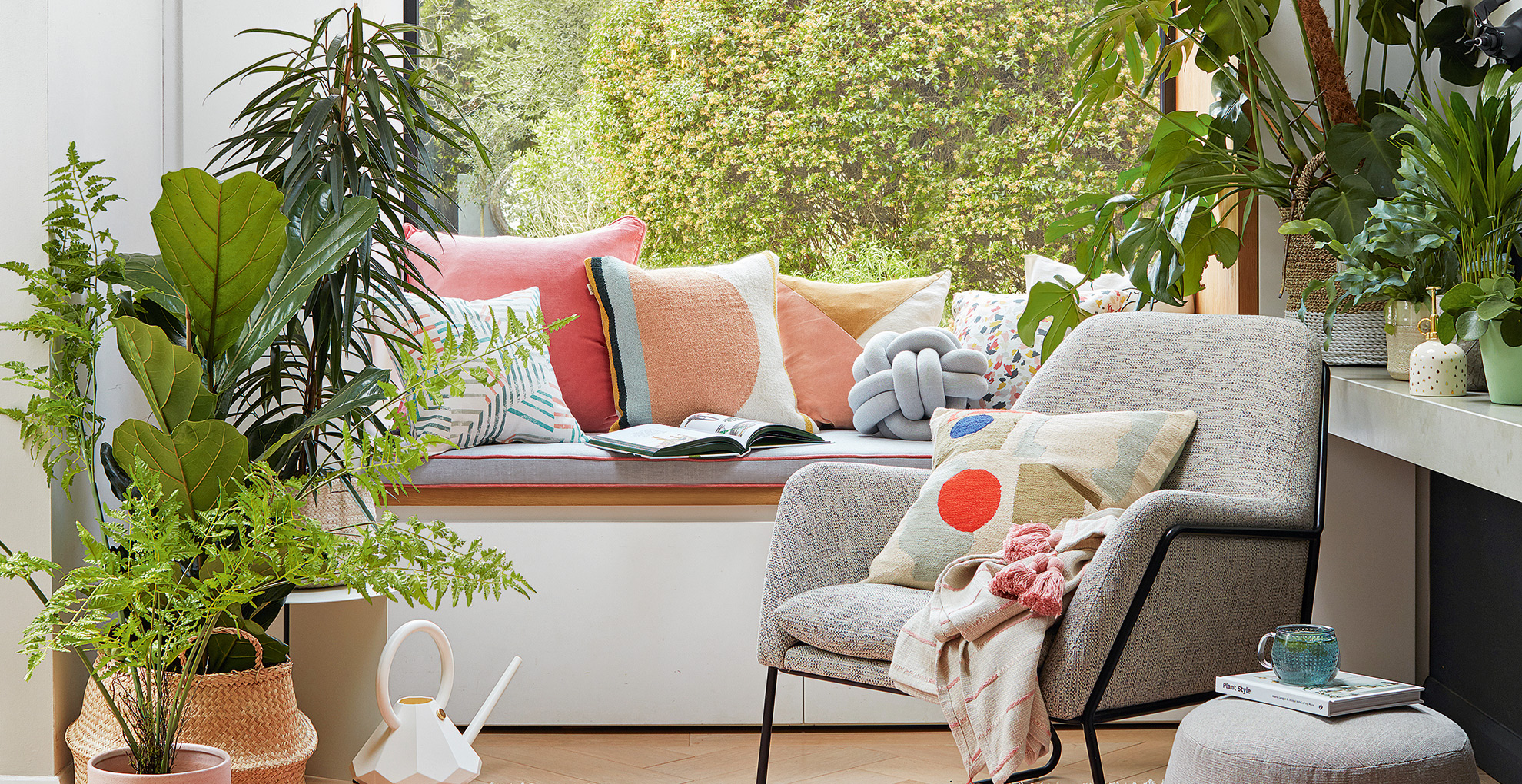
Welcoming the outside in is a key interior design trend for 2024, but did you know it is also a great hack for how to cool down a room? "Bringing nature inside is a great way to not only cleanse the air in your house but also to help circulate cooler air," says Ben Gallizzi, an energy expert at Money.co.uk.
"This works when certain plants such as weeping figs, snake plants, rubber plants, and Chinese evergreen to name a few, absorb warm air. Through the transpiration process, they release oxygen and cool moisture as a byproduct into the room. Not only this, but they look great too."
All the best places to buy plants will be able to advise on the most suitable houseplants for your room, depending on light quality and whether or not you have pets – because certain common houseplants are toxic to cats and dogs.
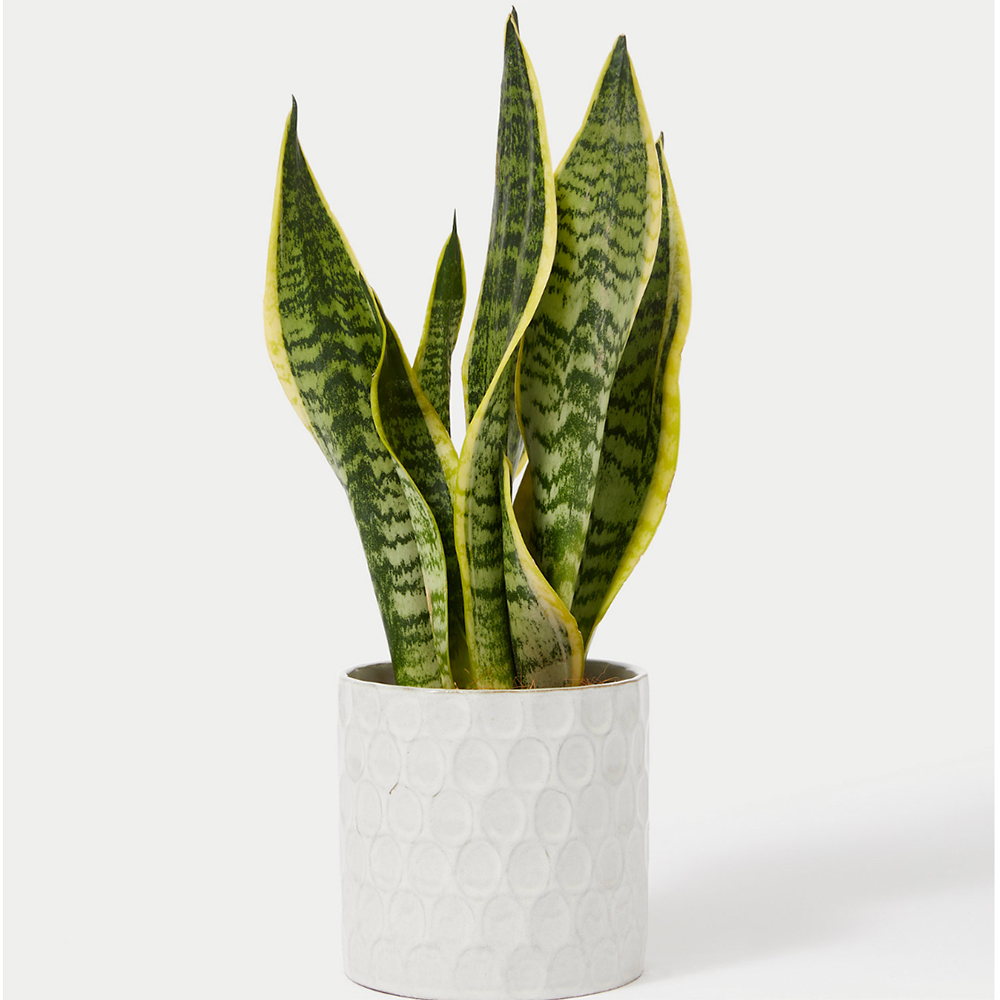
RRP: £25 | This established snake plant is a hardy house plant that requires very little effort, and this M&S one is sold in this embossed white ceramic pot.
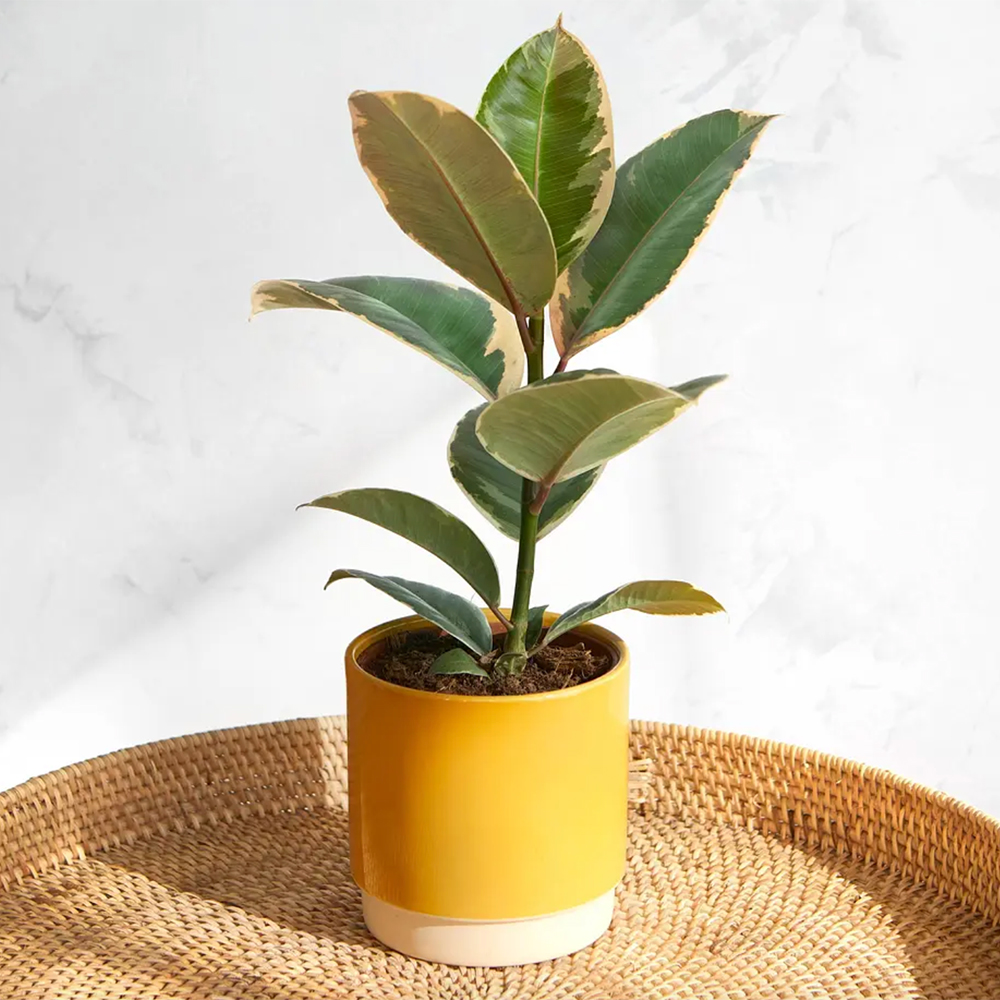
RRP: £32 | A great plant for those who don't want to have to do much to keep it thriving, as it's one of the easiest houseplants to keep alive. The plant arrives in the chic mustard pot.
11. Change the lightbulbs
The lightbulbs in a room can contribute to its overall temperature, as explained by Ben, an energy expert: "If you still have incandescent bulbs in your light fittings at home, and haven’t already made the switch to LED light bulbs, then it could make a difference."
"Incandescent bulbs waste around 90% of their energy by emitting heat and could limit you if you're trying to decrease the temperature of a room." Not to mention saving energy in the process, a small step towards more sustainable living at home.
Head to your local hardware store to pick up some new bulbs, a relatively small price to pay to quickly help cool down a room without AC. Incidentally, the right lightbulbs cannot only keep you cooler, but they can be a great way to get rid of mosquitoes also.
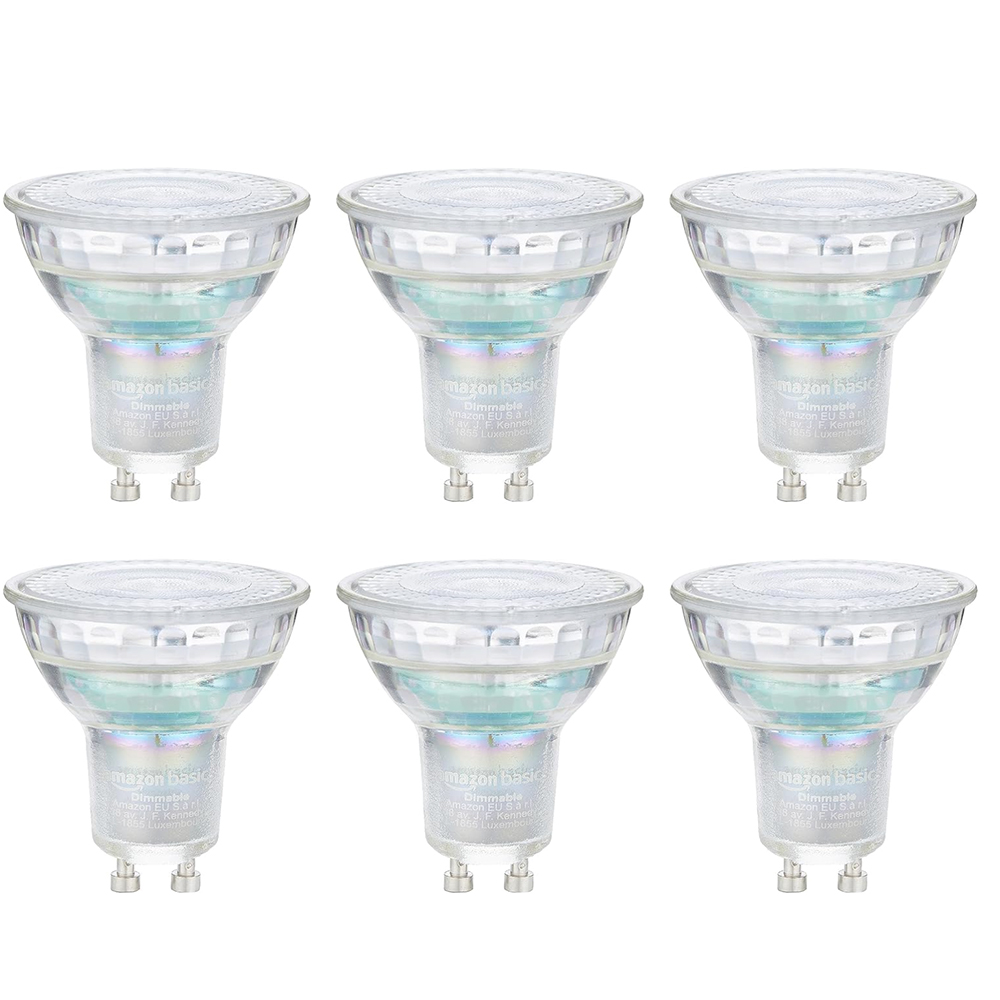
RRP: £19.46 pack of 6 | Perfect for kitchens and living rooms with spotlights these long-life and professional-quality, 35W equivalent, dimmable GU10 bulbs offer a cool white colour temperature.
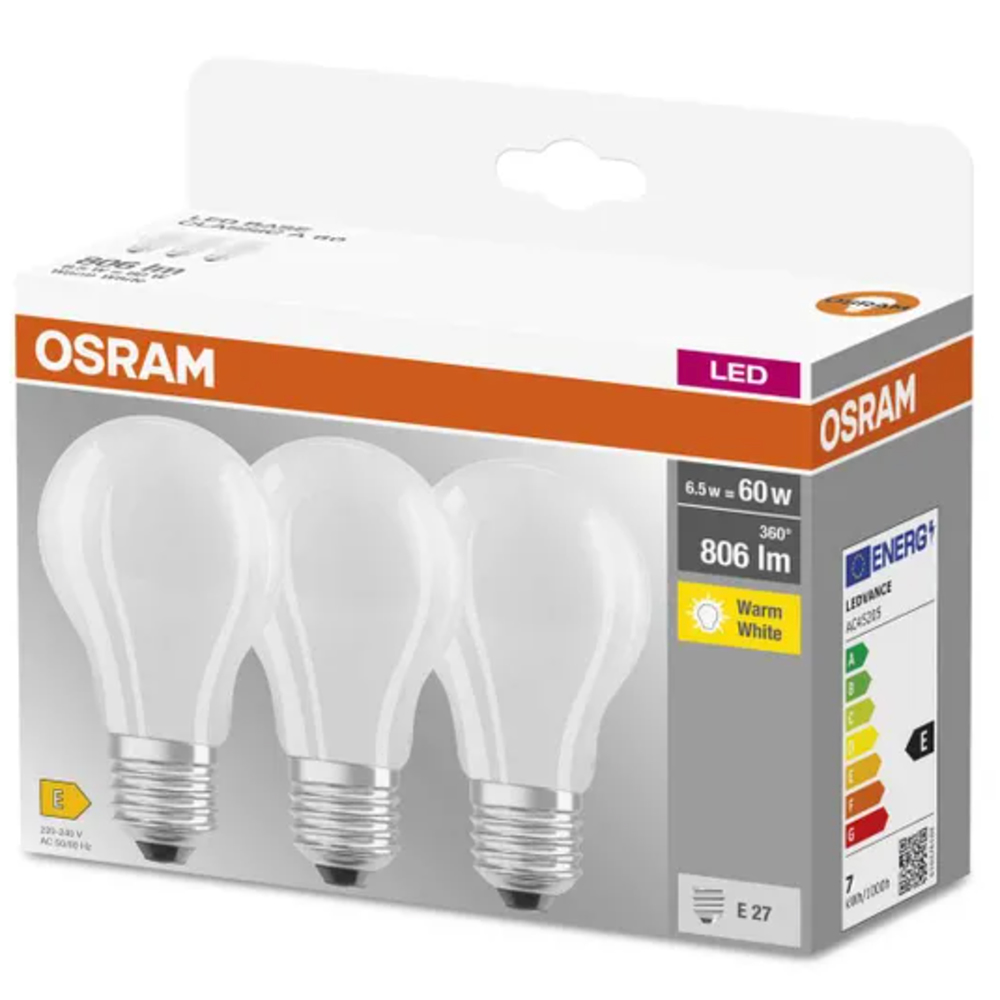
RRP: £11.99 pack of 3 | These warm white bulbs are the classic shape for floor lamps, table lamps and drum pendant lights.
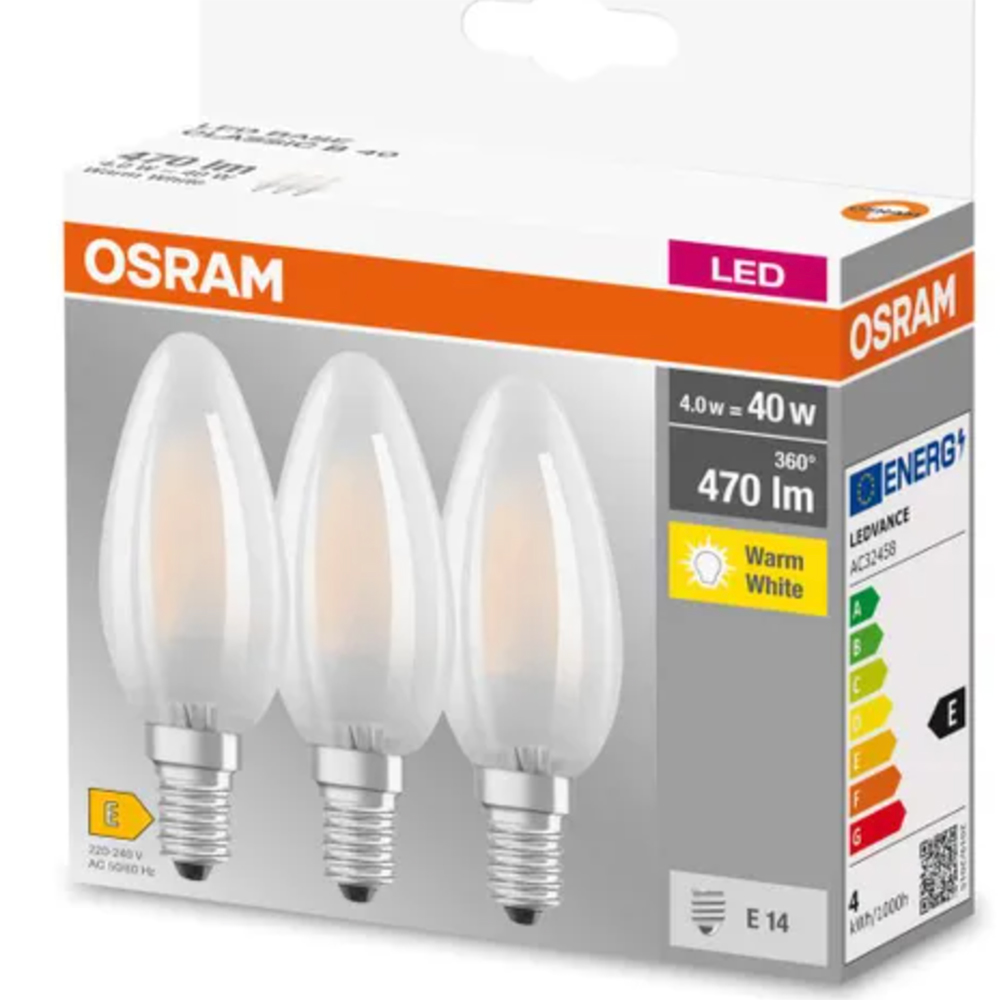
RRP: £11.99 pack of 3 | These candlelight LED bulbs are ideal for chandeliers and pendant lights to create a slimline silhouette.
12. Reduce heat in the kitchen by cooking outside
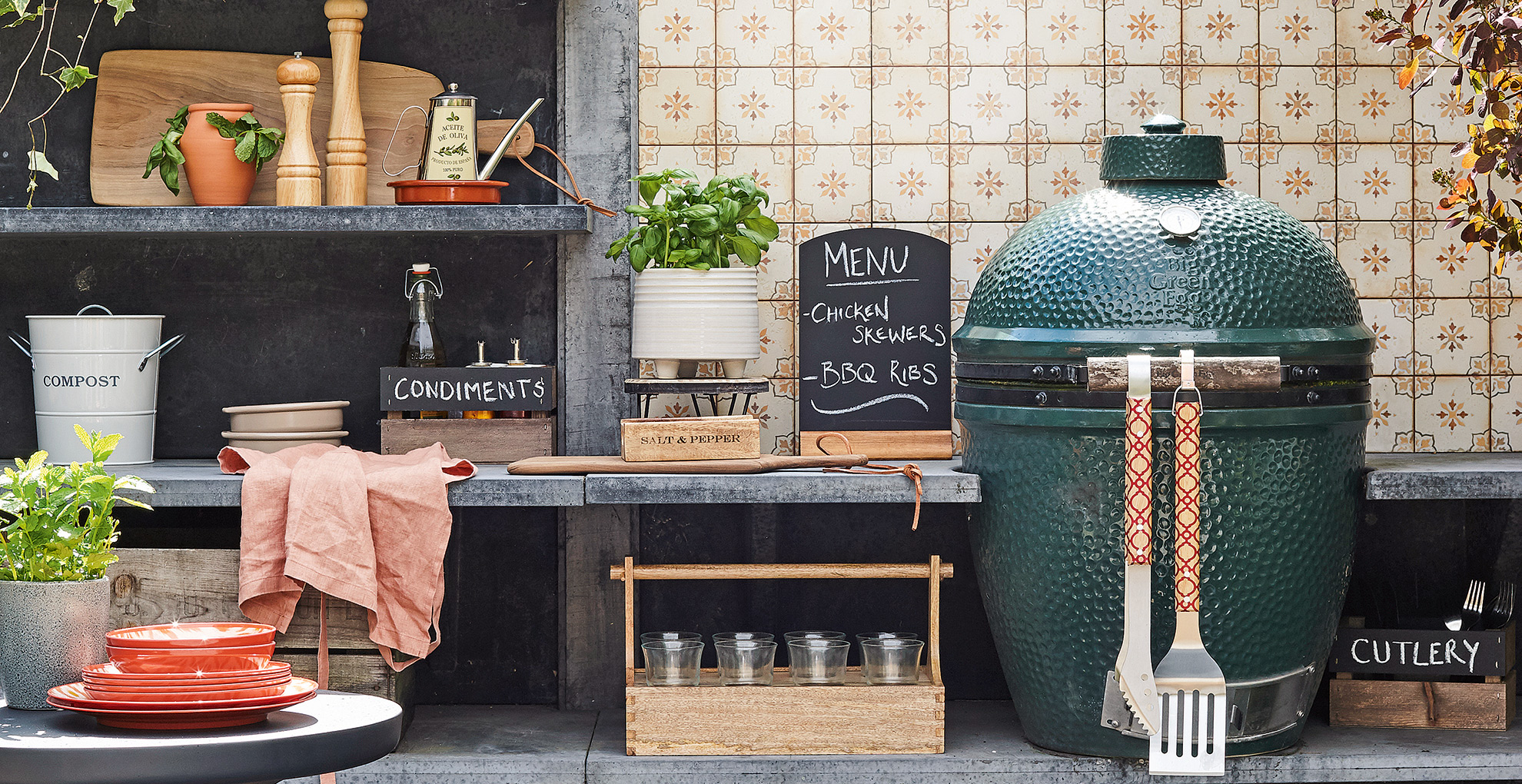
Cooking outside if you have the space is an easy way to help reduce the heat in your home by reducing your use of appliances such as ovens, gas hobs, and kettles which all produce heat and will increase the temperature of a room when used.
Thanks to current kitchen trends there are lots of different outdoor kitchen ideas this summer, from fully functioning kitchen spaces in gardens to makeshift cooking solutions with a camping stove.
If you haven't ventured outside since last summer, make sure you know how to clean a BBQ first, to prepare for a season of alfresco cooking.
13. Utilise small cooking appliances
While cooking outside is the preferable solution to reduce the heat in a kitchen for those who have no outdoor space this is not an option. In this instance look for the quickest methods for cooking indoors, making use of smaller appliances rather than firing up the oven - that's where the best air fryers are invaluable.
"Make use of your microwave and air fryer," suggests Ashleigh Tosh from MuscleFood.com. "These are a quicker way to cook so there will be less heat in the kitchen." Because you can cook so many things in an air fryer it doesn't in any way limit your mealtime selection.
14. Create a cross breeze
Welcome a cross breeze of continuously moving air to ensure your room feels instantly cooler. “A good hack to ensure the air flows quickly into a room is to create a cross breeze with your windows," suggests Andy.
Creating a cross-breeze in your living room or bedroom will allow some extra relief when it's very hot. A cross-breeze occurs when there is an entry and exit point for air. In bedrooms with two windows, aim a fan out one window while allowing fresh air to flow in through the other.
"If you have two windows that are in line with each other or positioned diagonally, keep them both open," advises Andy."You can also place a fan in front of each window – one fan blows in air from the outside, while the other window is reversed and blows air outside."
In rooms with only one window, keeping the door open allows a cross breeze to form from elsewhere in the house. Fans with added air purifying benefits (such as the Blueair Blue Pure Purifying Fan) are the best for those who suffer from hay fever, as the fan will help filter out the pollen.
15. Put ice in front of a fan
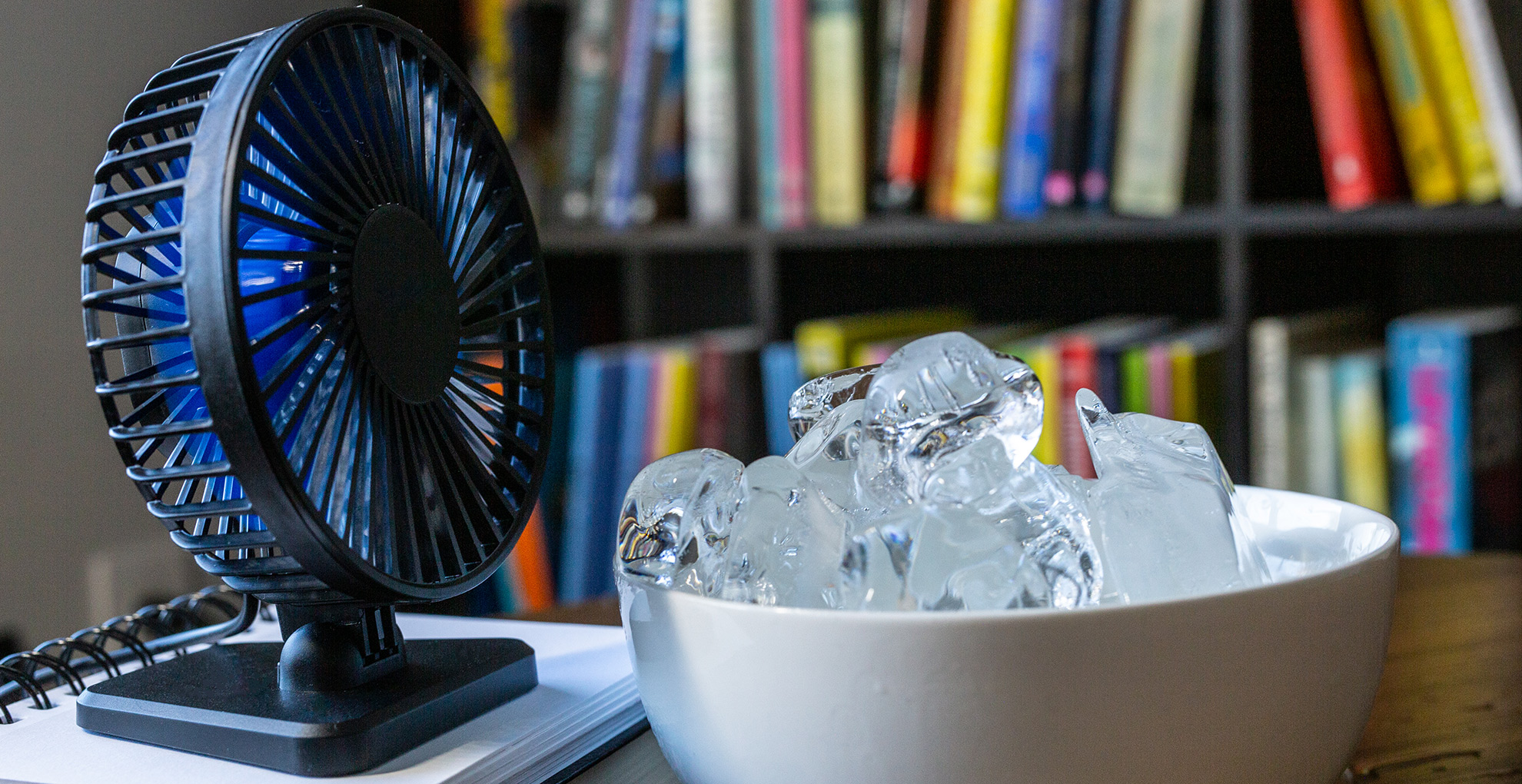
If you don't have ac but you do have a fan to hand, you can try creating a DIY ac with this handy hack. Putting ice in front of a fan is a tried and tested technique (we should know, we've tested it) that does help to cool down a room. Simple yet effective, this idea is especially handy for cooling a room without windows where you don't have the added benefit of natural airflow.
When you place a bowl or container full of ice in front of a fan the ice cools the air, creating a cooler breeze, rather than just circulating hot air around the room. Just be sure to place a plate under the bowl to catch any droplets of water.
Alternatively, try freezing two or three small plastic drink bottles filled with water and then positioning the frozen bottle in front of the fan. Spread them out so that they don’t block the fan’s air stream, and switch off your fan’s oscillation setting so that the fan is pointed directly at the bottles. This will have the same effect as the ice cubes.
When the ice melts, just freeze the bottles again – if you have the freezer space, keep multiple bottles prepared so you have a ready supply. You can also add two or three tablespoons of salt to the water before you freeze the bottles, which will lower the freezing temperature of the water and make the ice even colder.
16. Utilise ceiling fans effectively
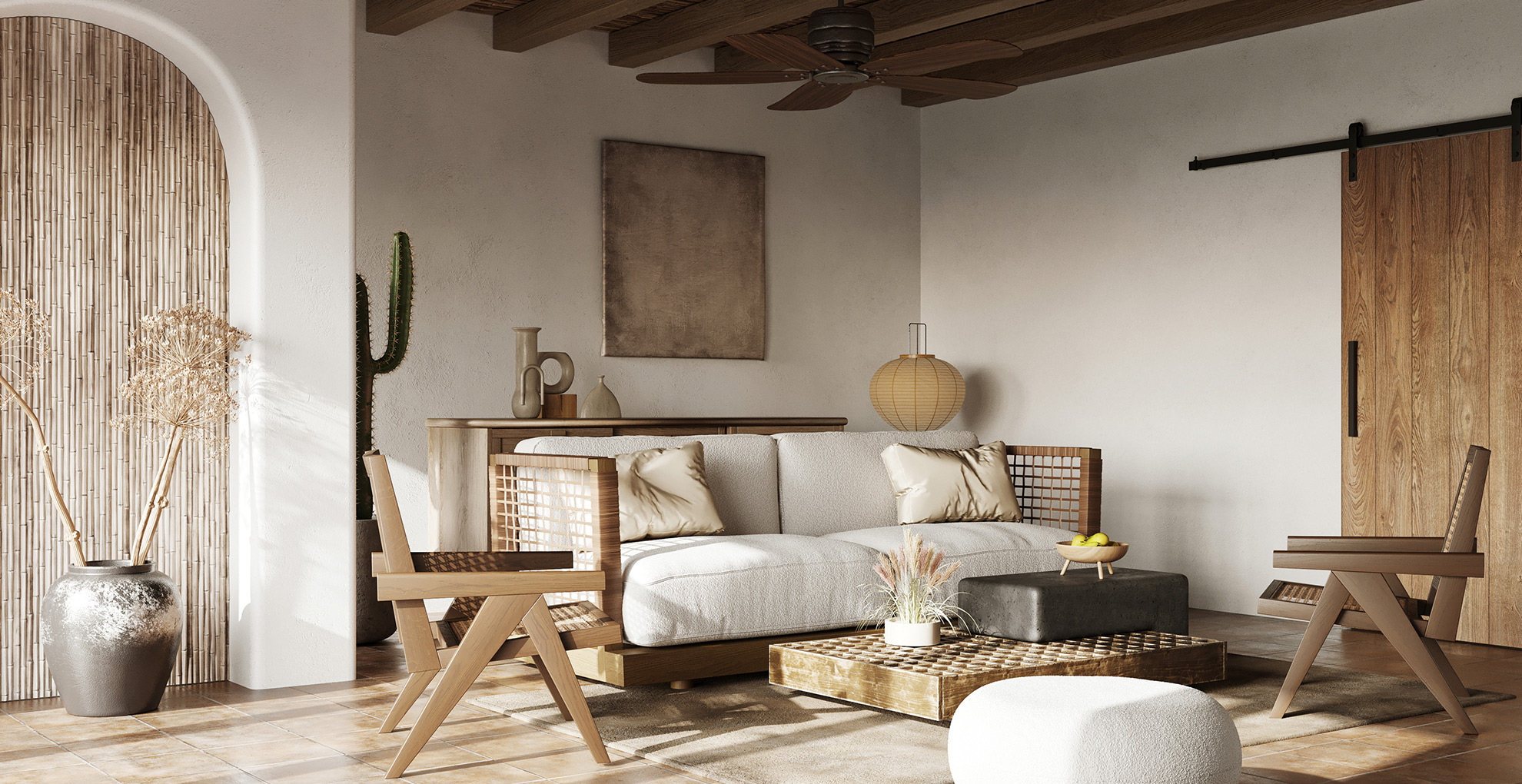
Heat rises so it's important to utilise ceiling fans to help disburse the warmer air. "Ceiling fans can be used to circulate air in a room, which can help to cool it down," explains James. "The movement of the air created by the fan can make the room feel several degrees cooler."
To make it more effective Andy adds, “You want to ensure any ceiling fans are set to anti-clockwise so they don’t distribute the warm air."
17. Do household chores at night
Save deep cleaning the house until the sun has set to reduce the amount of heating generated around the home.
"Do household tasks such as washing, ironing, and cooking at night to counteract some of the heat the appliances can give off," suggests Helen Rolph, price comparison expert at Quotezone.co.uk. "The likes of ovens and washing machines will only add to a rise in temperature around the household, so save chores for the cooler evenings."

Lisa is a freelance journalist who has written about interiors for more than 25 years and has worked on all the major homes titles, primarily Ideal Home, but also including Homes & Gardens, Country Homes & Interiors, Style at Home, Livingetc, Woman & Home, Easy Gardens and Good Homes magazines. Homes and interiors have always been a passion and she never tires of nosying around gorgeous homes, whether on TV, online, in print or in person, as well as being a serial shopper/bargain hunter.
- Tamara KellyLifestyle Editor
